Charles E W Bean, Diaries, AWM38 3DRL 606/250/1 - 1917 - 1937 - Part 1

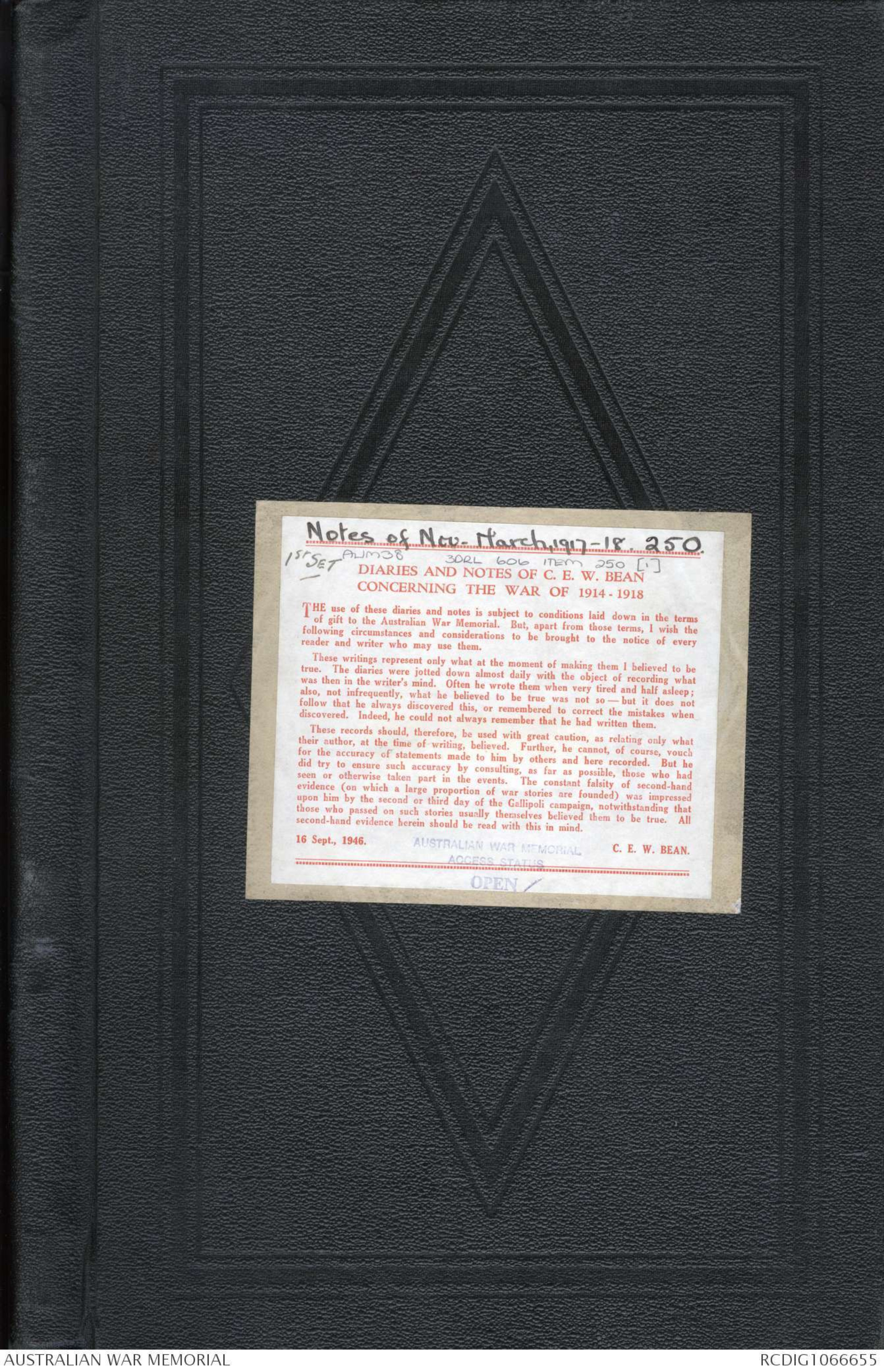
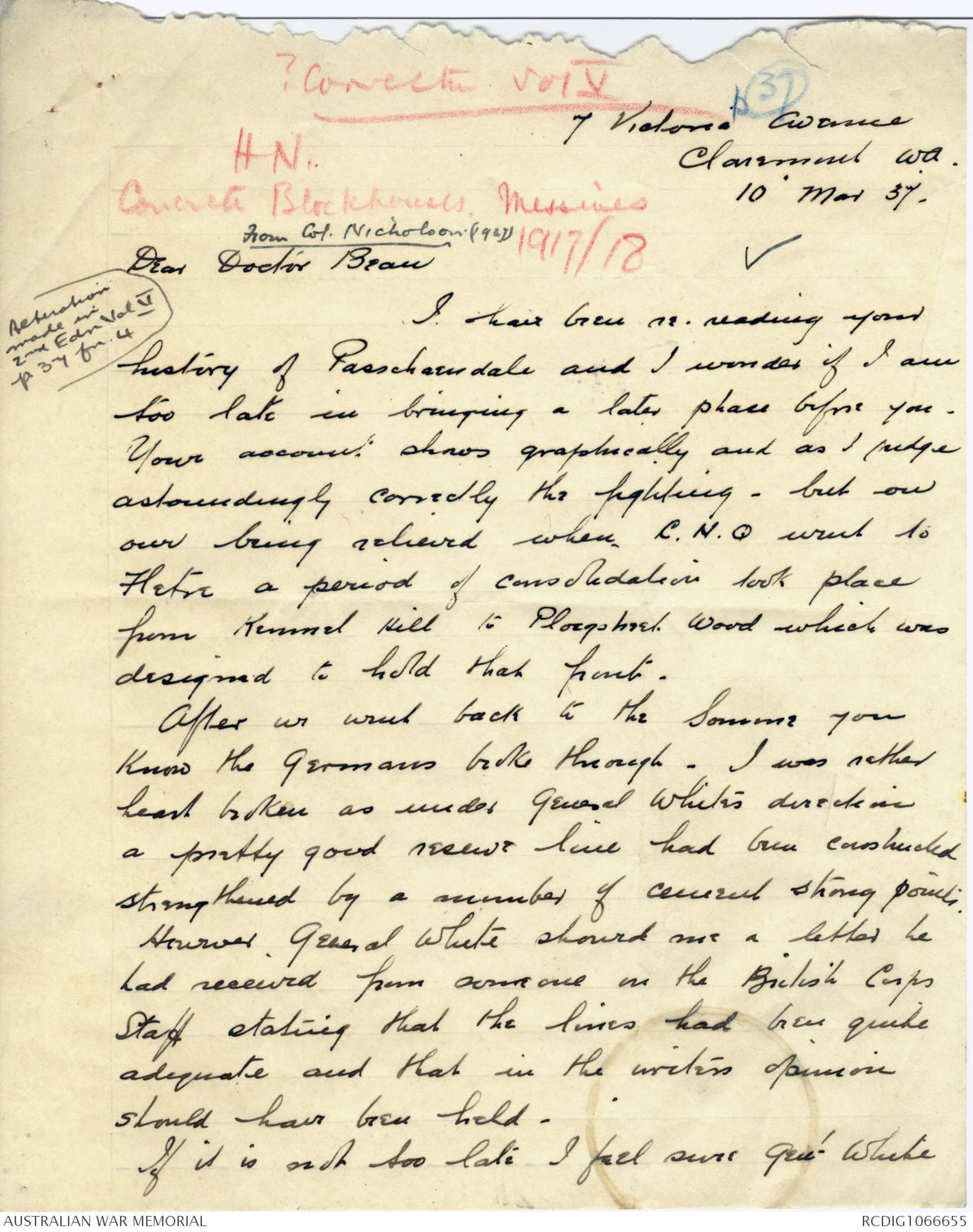
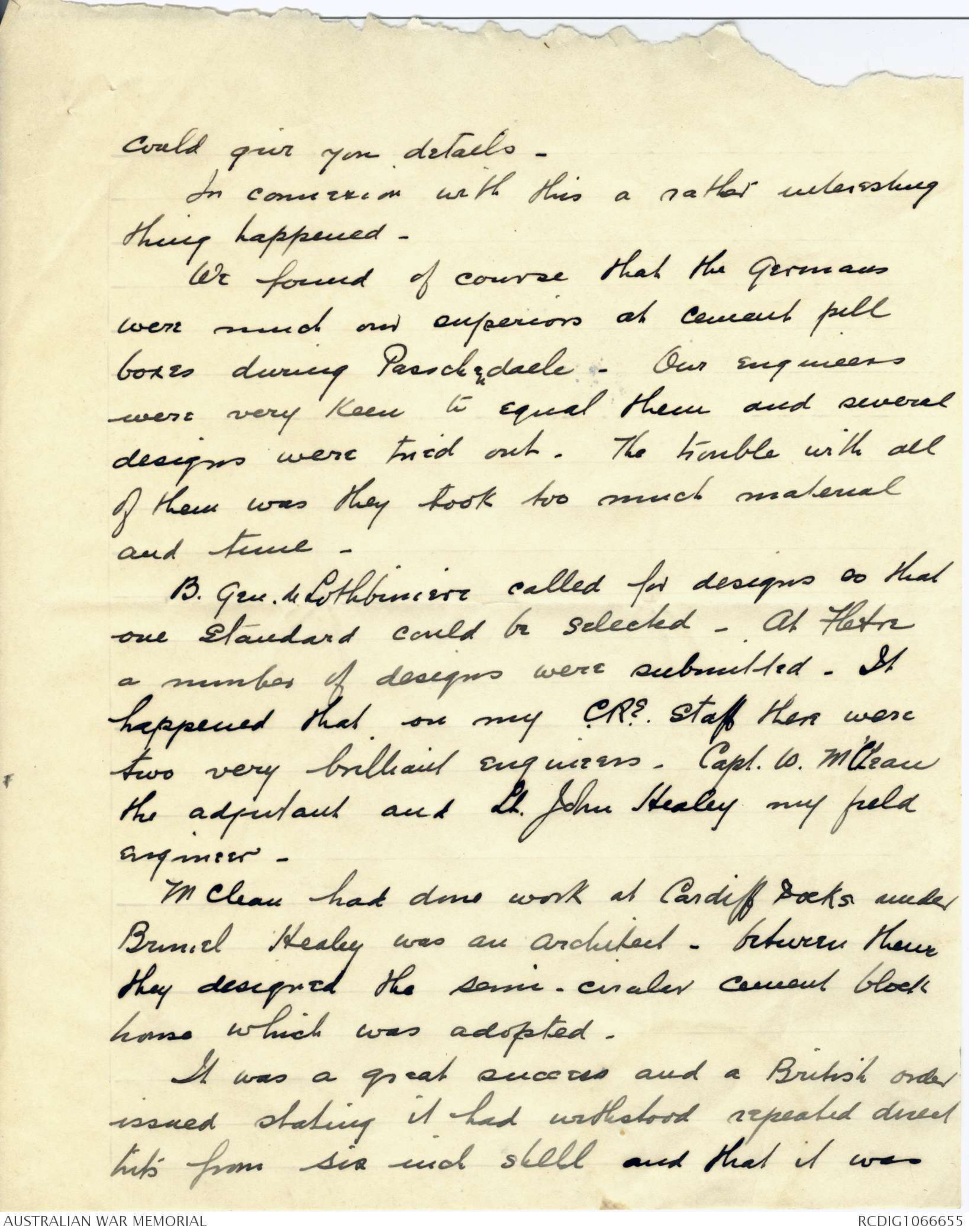
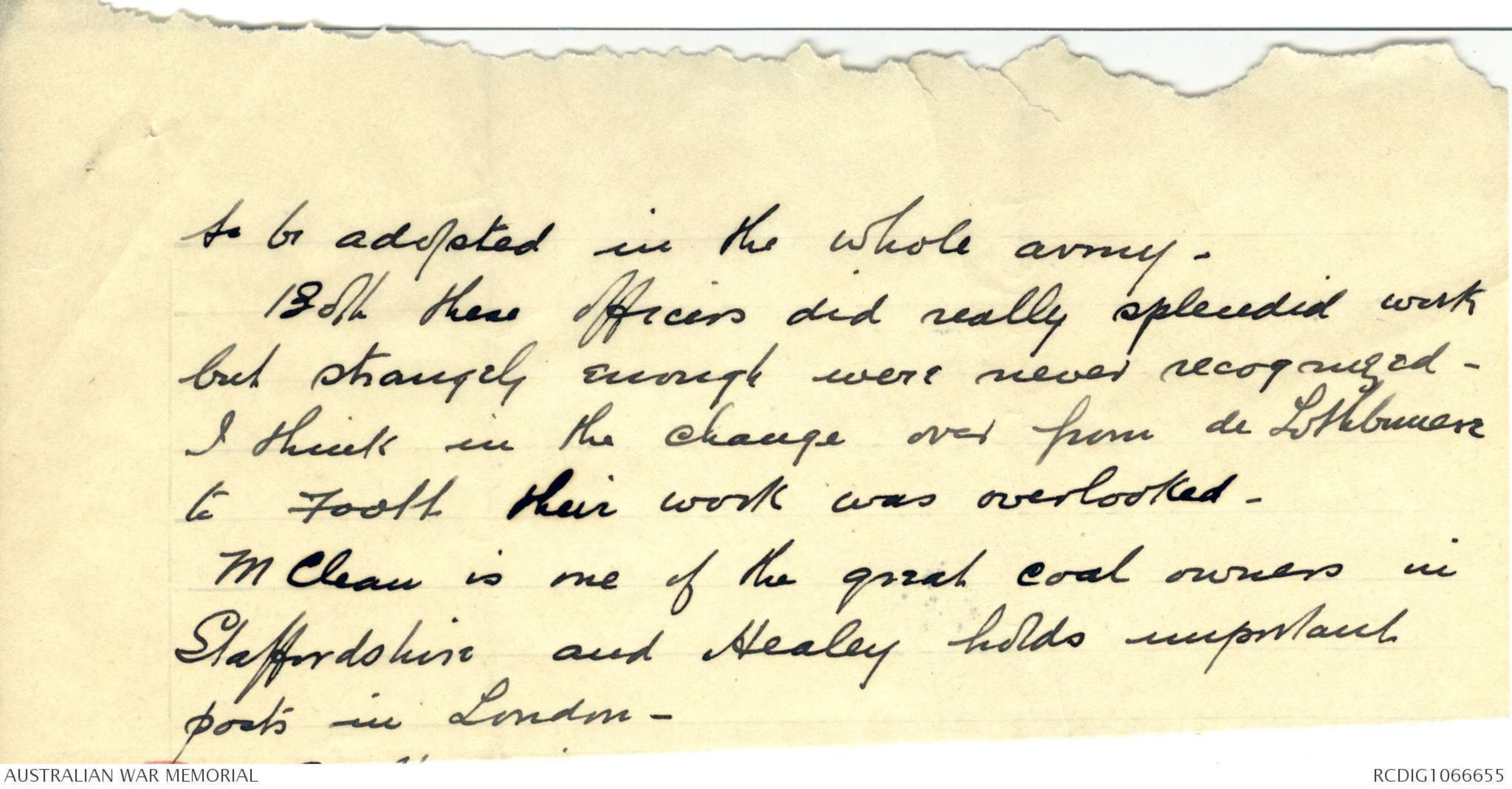
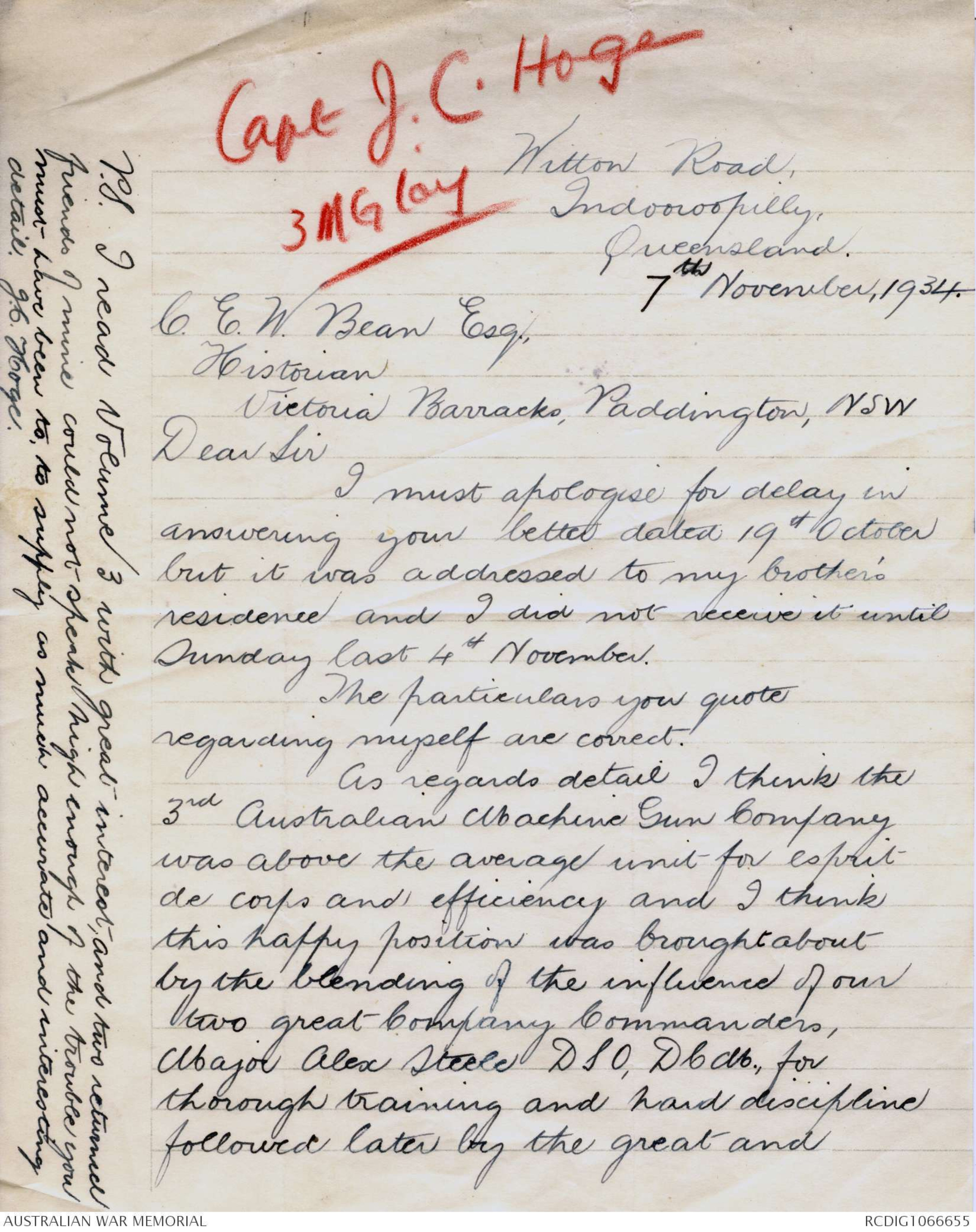
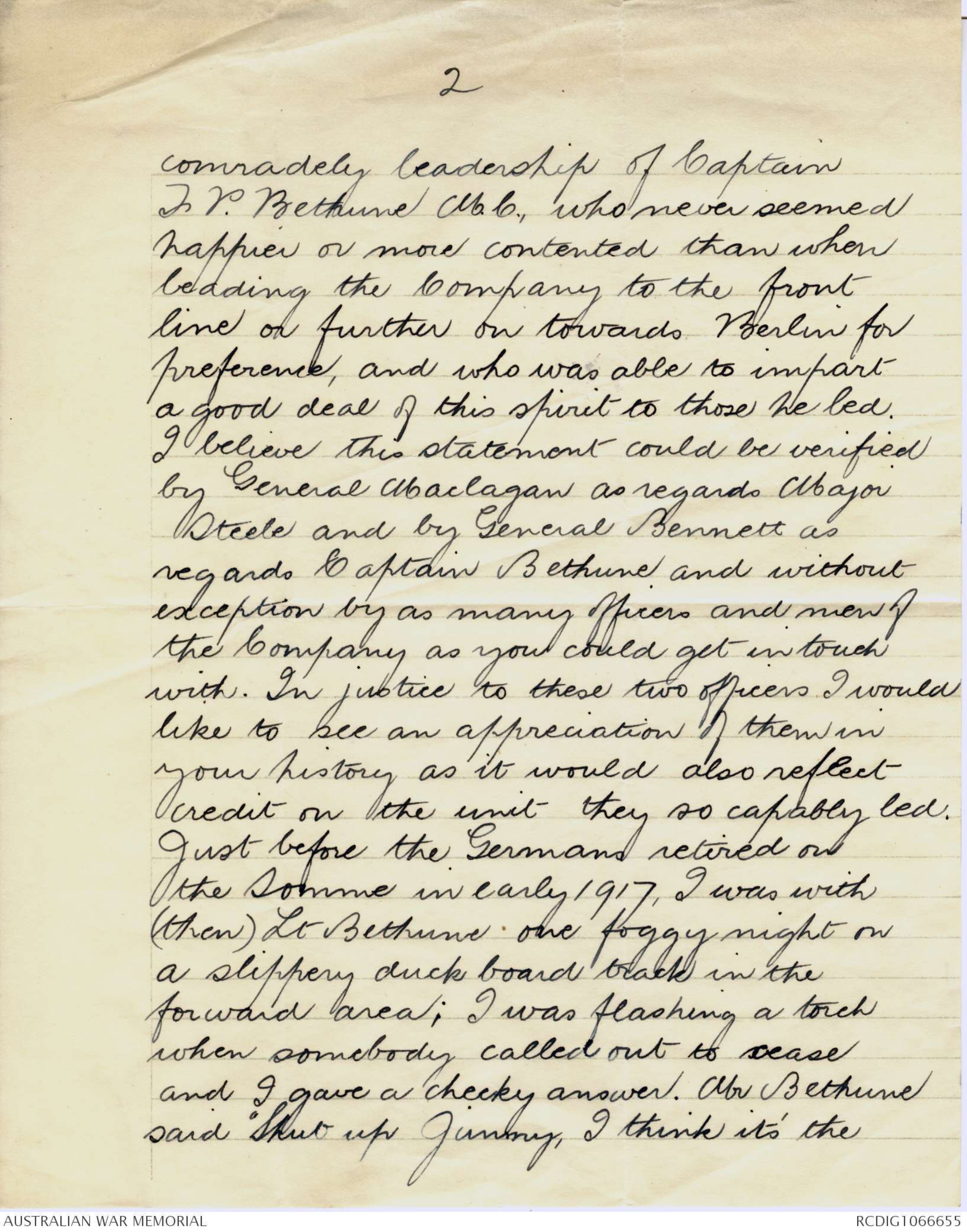
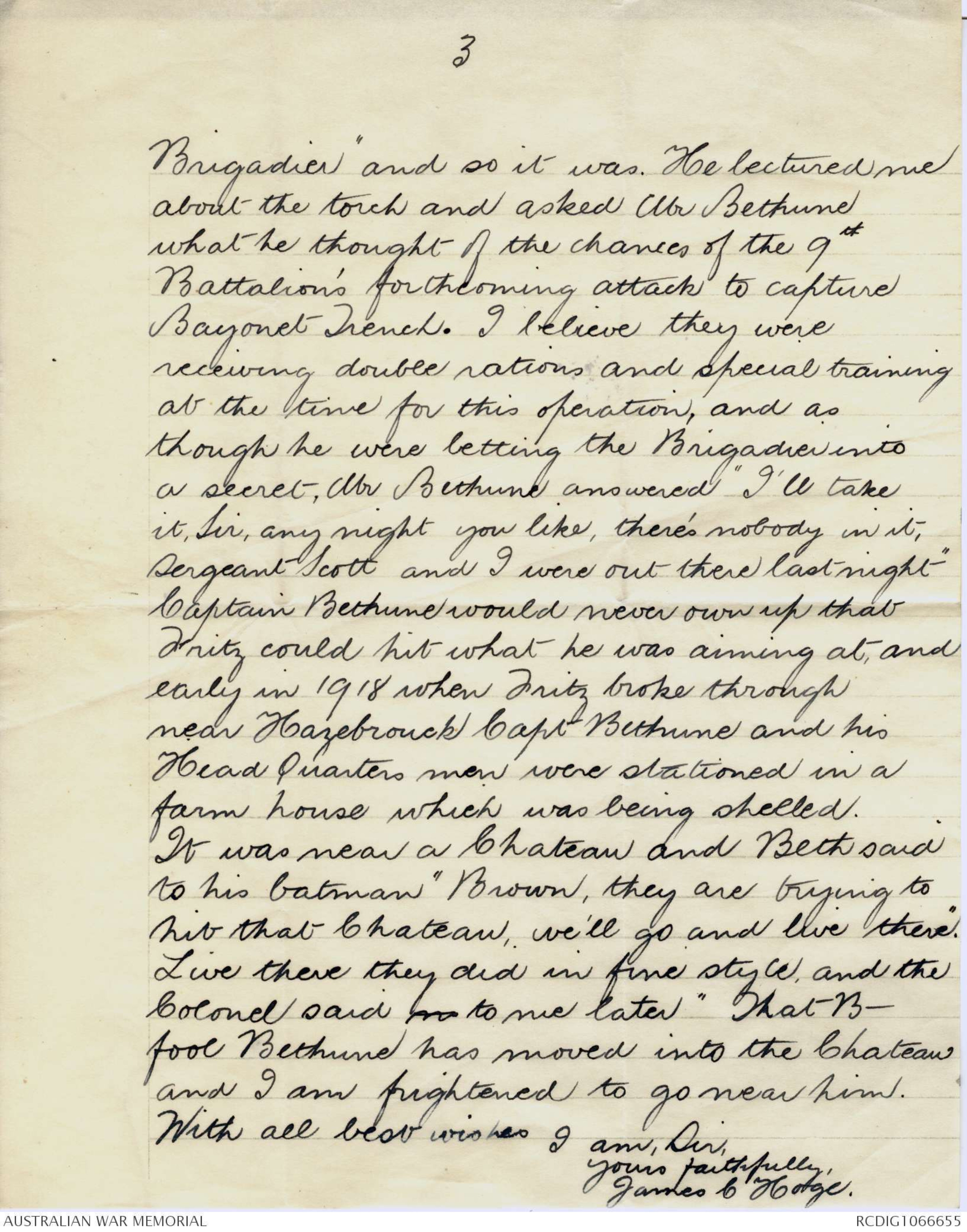
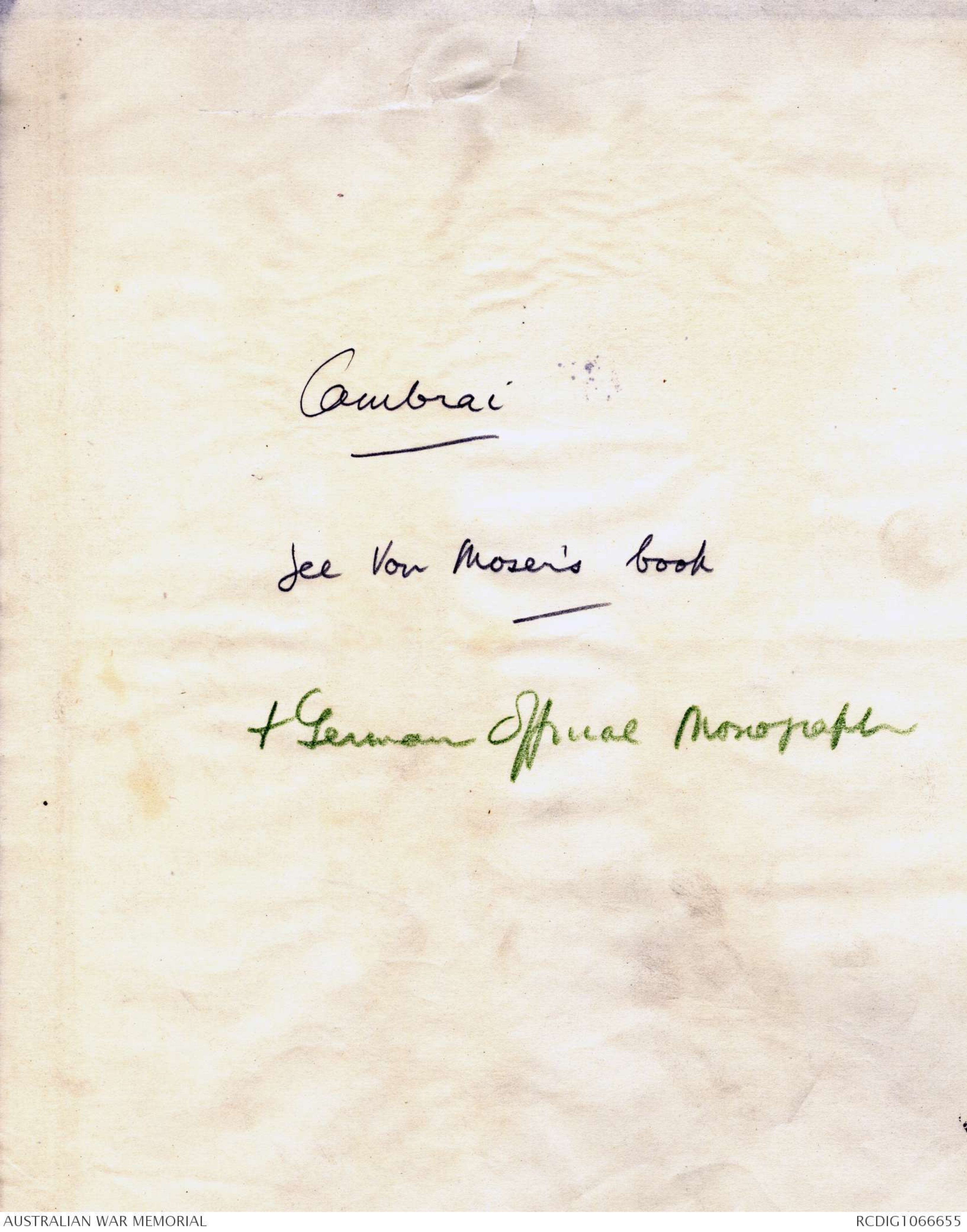
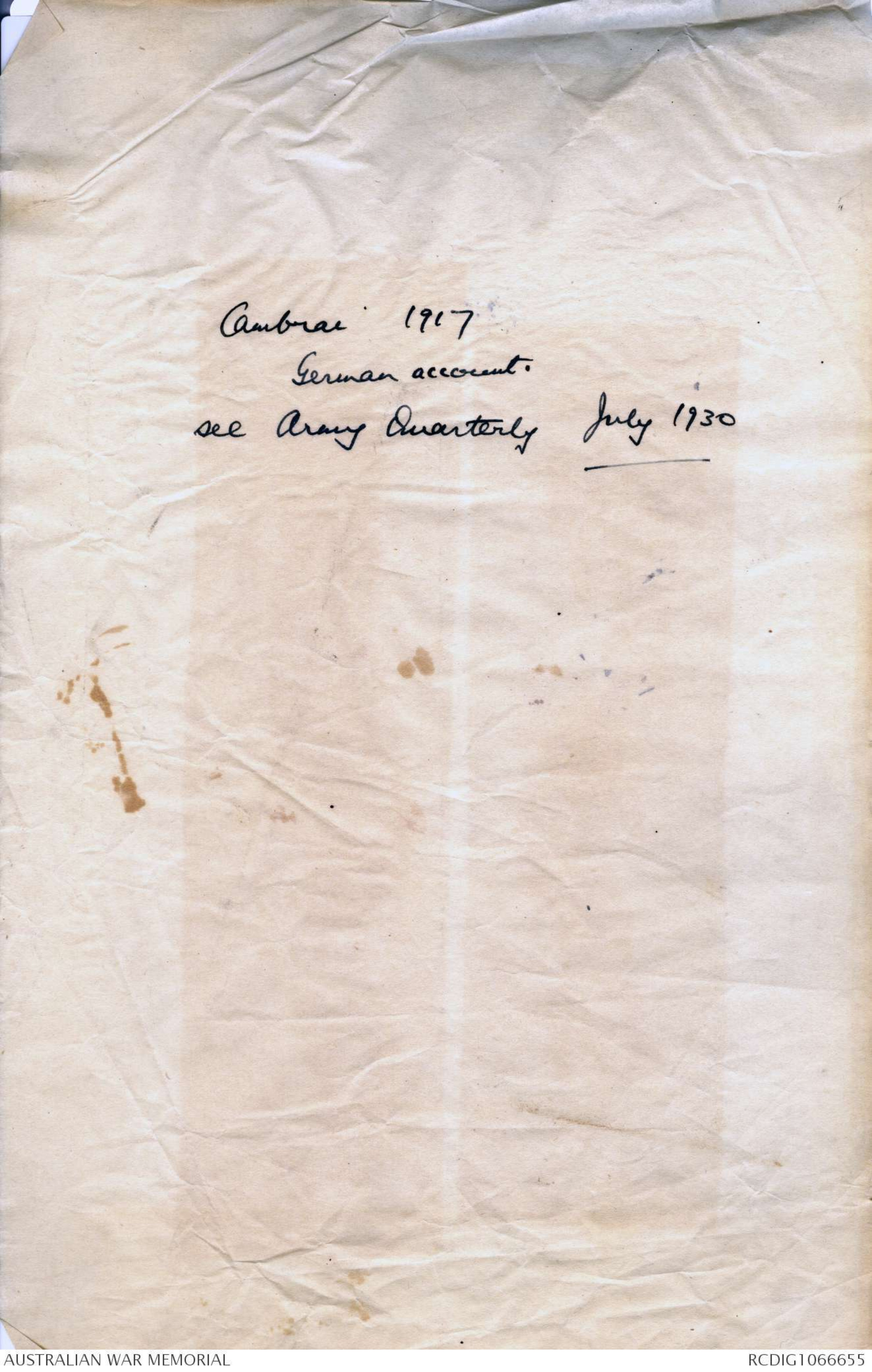
AWM38
Official History,
1914-18 War: Records of C E W Bean,
Official Historian.
Diaries and Notebooks
Item Number: 3DRL606/250/1
Title: Folder, 1917 - 1937
Comprises various papers on events of
November 1917 - March 1918, including extracts
of diaries of Pte J S Vartley, Sgt A L De Vine
and letters by Capt F P Bethune.
Notes of Nov - March, 1917 - 18. 250
1st SET AWM38 3DRL 606 ITEM 250 [1]
DIARIES AND NOTES OF C. E. W. BEAN
CONCERNING THE WAR OF 1914 - 1918
The use of these diaries and notes is subject to conditions laid down in the terms
of gift to the Australian War Memorial. But, apart from those terms, I wish the
following circumstances and considerations to be brought to the notice of every
reader and writer who may use them.
These writings represent only what at the moment of making them I believed to be
true. The diaries were jotted down almost daily with the object of recording what
was then in the writer's mind. Often he wrote them when very tired and half asleep;
also, not infrequently, what he believed to be true was not so - but it does not
follow that he always discovered this, or remembered to correct the mistakes when
discovered. Indeed, he could not always remember that he had written them.
These records should, therefore, be used with great caution, as relating only what
their author, at the time of writing, believed. Further, he cannot, of course, vouch
for the accuracy of statements made to him by others and here recorded. But he
did try to ensure such accuracy by consulting, as far as possible, those who had
seen or otherwise taken part in the events. The constant falsity of second-hand
evidence (on which a large proportion of war stories are founded) was impressed
upon him by the second or third day of the Gallipoli campaign, not withstanding that
those who passed on such stories usually themselves believed them to be true. All
second-hand evidence herein should be read with this in mind.
16 Sept., 1946. C. E. W. BEAN.
AUSTRALIAN WAR MEMORIAL
ACCESS STATUS
OPEN
? Correction Vol V p37
7 Victoria Avenue
Claremont Wa
10 Mar 37
[*HN. Concrete Blockhouses. Messines 1917/18*]
From Col. Nicholson (1937)
[* Reperation
made in
2nd Edn Vol V
p 37 fn. 4*]
Dear Doctor Bean
I have been re reading your
history of Passchaendale and I wonder if I am
too late in bringing a later phase before you.
Your account shows graphically and as I judge
astoundingly correctly the fighting - but on
our being relieved when C.N.Q went to
Fletre a period of consolidation took place
from Kemmel Hill to Plougshael Wood which was
designed to hold that front.
After we went back to the Somme you
know the Germans broke through. I was rather
heart broken as under General Whites direction
a pretty good reserve line had been constructed
strengthened by a number of cement strong points.
However General White showed me a letter he
had received from someone in the British Corps
Staff stating that the lines had been quite
adequate and that in the writers opinion
should have been held.
If it is not too late I feel sure Genl White
could give you details -
In connexion with this a rather interesting
thing happened -
We found of course that the Germans
were much our superiors at cement pill
boxes during Passchendaele - Our engineers
were very keen to equal them and several
designs were tried out. The trouble with all
of these was they took too much material
and time.
B. Gen. de Lothbiniere called for designs so that
one standard could be selected -. At Fletre
a number of designs were submitted. It
happened that on my C.RE Staff there were
two very brilliant engineers. Capt. G MClean
the adjutant and Lt John Healey my field
engineer.
MClean had done work at Cardiff Docks under
Brunel Healey was an architect - between them
they designed the semi-circular cement block
house which was adopted.
It was a great success and a British order
issued stating it had withstood repeated direct
hits from six inch shell and that it was
to be adopted in the whole army-
Both these officers did really splendid work
but strangely enough were never recognized -
I think in the change over from de Lothbiniere
to Tooth their work was overlooked -
M Clean is one of the great coal owners in
Staffordshire and Healey holds important
posts in London.
Capt J.C. Hogen
3MG Coy
Witton Road,
Indooroopilly,
Queensland.
7th November, 1934.
C.E.W. Bean Esq.
Historian
Victoria Barracks, Paddington, NSW
Dear Sir
I must apologies for delay in
answering your letter dated 19th October
but it was addressed to my brother's
residence and I did not receive it until
Sunday last 4th November.
The particulars you quote
regarding myself are correct.
As regards detail I think the
3rd Australian Machine Gun Company
was above the average unit for esprit
de corps and efficiency and I think
this happy position was brought about
by the blending of the influence of our
two great Company Commanders,
Major Alex Steele DSO, DCM., for
thorough training and hard discipline
followed later by the great and
[*P.S. I read Volume 3 with great interest and two returned
friends of mine could not speak highly enough of the trouble you
you must have been to, to supply as much accurate and interesting
detail. G.C. Hoge.*]
2
comradely leadership of Captain
T P. Bethune M.C., who never seemed
happier or more contented than when
leading the Company to the front
line or further on towards Berlin for
preference, and who was able to impart
a good deal of this spirit to those he led.
I believe this statement could be verified
by General Maclagan as regards Major
Steele and by General Bennett as
regards Captain Bethune and without
exception by as many officers and men of
the Company as you could get in touch
with. In justice to these two officers I would
like to see an appreciation of them in
your history as it would also reflect
credit on the unit they so capably led.
Just before the Germans retired on
the Somme in early 1917, I was with
(then) Lt Bethune one foggy night on
a slippery duck board track in the
forward area; I was flashing a torch
when somebody called out to cease
and I gave a cheeky answer. Mr Bethune
said Shut up Jimmy, I think it's the
3
Brigadier and so it was. He lectured me
about the torch and asked Mr Bethune
what he thought of the chances of the 9th
Battalion's forthcoming attack to capture
Bayonet Trench. I believe they were
receiving double rations and special training
at the time for this operation, and as
though he were letting the Brigadier into
a secret, Mr Bethune answered "I'll take
it, Sir, any night you like, there's nobody in it,
Sergeant Scott and I were out there last night"
Captain Bethune would never own up that
Fritz could hit what he was aiming at, and
early in 1918 when Fritz broke through
near Hazebrouck Capt Bethune and his
Head Quarters men were stationed in a
farm house which was being shelled.
It was near a Chateau and Beth said
to his batman "Brown, they are trying to
hit that Chateau, we'll go and live there".
Live there they did in fine style and the
Colonel said m to me later "That B-
fool Bethune has moved into the Chateau
and I am frightened to go near him.
With all best wishes
I am, Sir,
Yours faithfully,
James C Hoge.
Cambrai
Lee Von Moser's book
& German Official Monograph
Cambrai 1917
German account.
see Army Quarterly July 1930
 Sandy Mudie
Sandy MudieThis transcription item is now locked to you for editing. To release the lock either Save your changes or Cancel.
This lock will be automatically released after 60 minutes of inactivity.